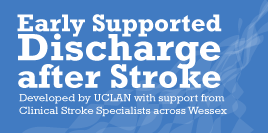 |
Social Identity |
Recommendations 7.3.1
A. The rehabilitation service should establish with each patient specific social and leisure activities that they would like to undertake in the community and:
- advise the person with stroke on the potential for undertaking an activity
- identify any barriers to success (for example low self-confidence), give advice and work with the patient on how to overcome those barriers
- where appropriate refer the person with stroke on to community organisations (statutory and non-statutory) that can support the patient in fulfilling their wanted roles
B. Local commissioners should ensure that community integration and participation for disabled people is facilitated through:
- ensuring a suitable community transport system that is accessible and available
- organising and supporting venues for social and leisure activities able to accommodate disabled people, especially people with communication and cognitive problems
- organising and supporting social networks for disabled people (e.g. through voluntary groups)
- making sure appropriate stroke specialist and generic voluntary sector services and peer support (e.g. communication support groups, stroke clubs, self-help groups and communication partner schemes) are available and that information and signposting to them are given
Sources 7.3.2
A-B Consensus; National Stroke Strategy quality markers 13 and 15
 |